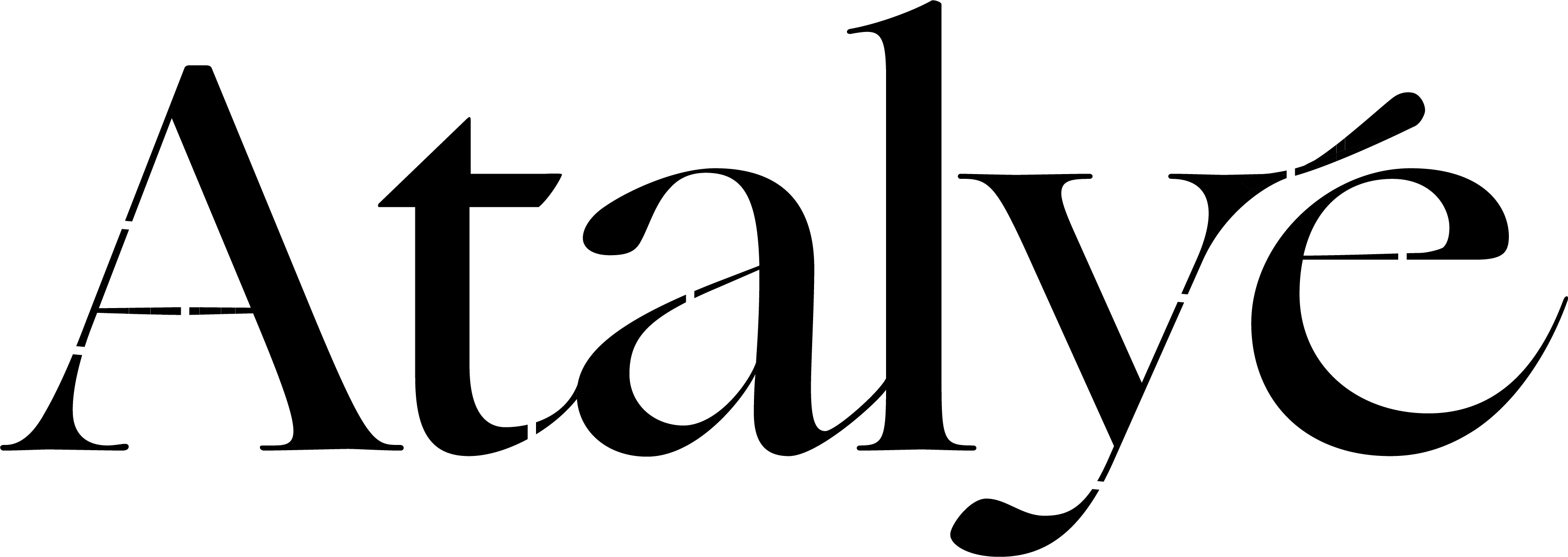The direct correlation between sizing + fit and the fashion industry’s waste.
Here at atalyé we focus on solving the sizing issue in the fashion industry using technology. We first wanted to take a moment to explain what we have found problematic about today’s sizing system. In the next few weeks, with different blog posts, we will present our research and keep looking for the best solution for this issue. Hope to hear your thoughts and opinions about this ✨
This week we explain the direct correlation between sizing and fit and the fashion industry’s waste:
We know that economic growth today mainly consists of making products that will fail after a short period of time to ensure more sales. The fashion industry is no exception unfortunately. The amount of purchase and disposable clothing continues to increase due to the fast fashion business. Apparel consumption per capita has swelled considerably in the past few years.
This model was built to continually achieve economic growth through mass production and globalization. This fast fashion industry is based on a linear system of rapid design, low quality production, distribution and marketing stimulating overconsumption. Today, 85% of textiles are sent to landfills covering 4% of Earth’s surface area and producing 21 billion tons of waste every year.
Research has found that the main reason for discarding garments was because it no longer ‘looks good’ in the eyes of the consumer. This connotation of not ‘looking good’ directly links to the issue of short lifecycle and low usage of garments. In order for the consumers to keep their clothing longer and therefore extend lifecycle, the products need to be designed appropriately for more uses and longer lifespan. 4 design elements were determined by WRAP (Working together for a world without waste’s final report), and a range experts from the fashion industry, as fundamental factors contributing to making garments look good longer and therefore extend their lifecycle. These 4 elements are size and fit, fabric quality, colors and styles, and care.
Size and fit are the primary reason for disposing clothing due to not no longer fitting the consumer’s body. Clothing fit has been proven to be the most important element determining consumers’ overall satisfaction with the garments. However, previous research has shown that 62% of women did not find clothing that fit them well, and 57% of women did not fit into today’s standardized sizes. This statistic proves the contemporary chaos in clothing sizes due to unavailability of certain sizes not offered and therefore creating consumers’ dissatisfaction with garments’ fit.
Size and fit are crucial elements that designers automatically think about when creating. And clearly, size and fit are also essential factors when purchasing a garment but now we have also found out that they are key elements for customers when they decide if they will keep clothing or discard it.
So where does it go wrong exactly? Is it during the design process? The way we think about sizing and fit? During production? And most importantly, how can we find a more appropriate solution to decrease fashion’s waste coming from misfit and bad sizing?
And what’s making us hopeful is that there are many different answers. With Atalyé, we are trying to find a solution to this size and fit problem with 3D body scanning and made-to-measure garments. And we are happy to see that we aren’t the only ones! We have found a couple initiatives that think about this problem as well and have found their own solutions. So great to see other people’s take on the same issue. We will of course share these with you because they are worth taking a look!
Next week we will explain how we got to this point focusing on today’s traditional sizing system. What is today’s traditional sizing system? How was it developed? When? And if it’s still successful to this day.
Until then please share your thoughts with us. So interesting to think about these things and talk about them together.💫
Sources:
https://www.ncbi.nlm.nih.gov/pmc/articles/PMC1964887/
https://digitalcommons.bard.edu/cgi/viewcontent.cgi?article=1033&context=senproj_f2016
http://isiarticles.com/ bundles/ Article/pre/pdf/94421.pdf
https://www.researchgate.net/publication/286774073_Sustainable_fashion_and_textiles_Design_journeys
https://scholar.dominican.edu/cgi/viewcontent.cgi?article=1001&context=honors-theses
https://unstick.me/3-straightforward-methods-for-analyzing-qualitative-interview-data/
https://www.academia.edu/38195316/Reusing_Crafted_Fabric_and_Zero_Waste_Fashion_Approaches
https://www.researchgate.net/publication/313479112_Design_for_Longevity_Guidance_on_Increasing_ the_Active_ Life_of_Clothing Pisut, G., & Connell, L. J. (2007). Fit preferences of female consumers in the USA. Journal of Fashion Marketing and Management, 11(3), 366-379.
Yu, W. (2004). Subjective assessment of clothing fit. In J. Fan, W. Yu, & L. Hunter (Eds.), Clothing appearance and fit: Science and technology (pp. 31-42). Cambridge, England: Woodhead.
https://lib.dr.iastate.edu/cgi/viewcontent.cgi?article=4191&context=etd
Brown, P. (1992). Ready-to-wear apparel analysis. New York: Macmillan Publishing Company.
LaBat, K., & DeLong, M. (1990). Body cathexis and satisfaction with fit of apparel. Clothing and Textiles Research Journal, 8(2), 43-48.
Workman, J. E. (1991). Body measurement specifications for fit models as a factor in clothing size variation. Clothing and Textiles Research Journal, 10(1), 31-36.
Photo by Jana Sabeth


0 Comments
There are no comments yet. Be the first one to post one!